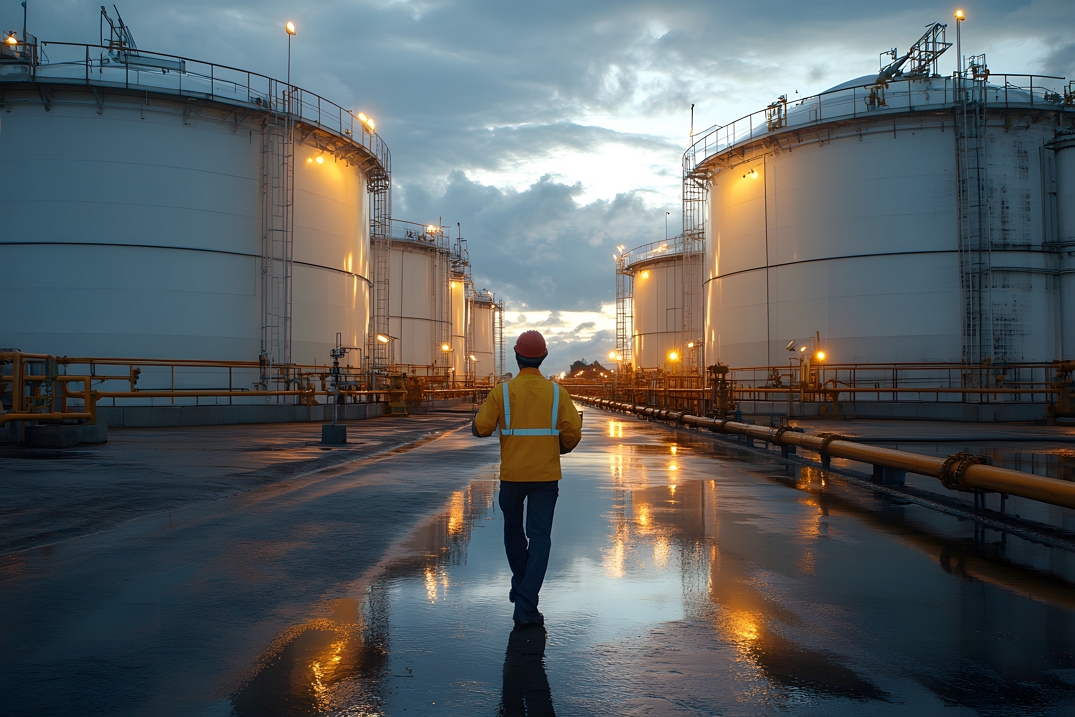The oil and gas industry has long relied on gathering systems to transport crude oil and natural gas from production sites to processing facilities and main pipelines. These networks of small-diameter pipelines and auxiliary equipment form the backbone of upstream and midstream operations.
However, they also present unique safety challenges, particularly in remote regions where aging infrastructure, harsh environments, and limited visibility can lead to catastrophic leaks and environmental damage.
As the energy sector faces mounting pressure to improve safety and environmental stewardship, integrating artificial intelligence (AI) with smart gathering systems is becoming not just advantageous but essential.
Through advanced leak detection technologies, anomaly detection, and the use of digital twins, AI is redefining how gathering networks are monitored, maintained, and secured.
#Gathering System Safety Challenges
Oil and gas gathering systems operate in complex environments. These networks often span vast and remote areas, including offshore sites, desert regions, forests, and arctic zones.
In such terrains, physical inspection and manual monitoring are not only difficult but also inefficient. Many assets are decades old and were not designed with modern monitoring technologies in mind.
Key safety challenges include:
Aging infrastructure: Corroded or weakened pipes are more prone to leaks and ruptures.
Sparse sensor deployment: Traditional leak detection relies on minimal instrumentation.
Delayed response times: In remote areas, leaks may go undetected for hours or even days.
Regulatory compliance: Growing regulations demand stricter environmental and safety practices.
In the face of these issues, traditional pipeline management systems are proving inadequate. That’s where AI-enhanced solutions come in.
#How AI and Advanced Sensors Transform Leak Detection
Modern smart gathering systems utilize a combination of edge sensors, cloud connectivity, and artificial intelligence to monitor the network in real-time.
AI for leak detection in midstream oil and gas operations leverages massive volumes of sensor data to identify minute deviations that human operators or conventional systems might miss.
Advanced sensor technologies (including fiber-optic sensing, acoustic monitors, pressure transducers, and chemical detectors) feed continuous data into AI models.
These models are trained to recognize patterns associated with normal operations and detect subtle signs of anomalies, such as pressure drops, flow inconsistencies, or unusual vibrations that may indicate a leak.
Here’s how this AI-driven approach improves detection accuracy:
Real-time analytics: AI algorithms process data on the edge or in the cloud to identify leaks as they occur, enabling prompt action.
Context-aware detection: AI considers operational context (such as temperature fluctuations or pump cycles) before flagging anomalies.
False positive reduction: Machine learning models adapt over time to differentiate between benign anomalies and actual threats, reducing unnecessary shutdowns.
Predictive capabilities: AI can forecast potential leaks before they happen by analyzing wear patterns, corrosion rates, and fluid dynamics.
For a better understanding of real-time data analytics, please read the following blog: “How Real-Time Data Improves Safety and Efficiency”.
#AI for Anomaly Detection in Pipeline Networks
Anomaly detection lies at the heart of AI-enhanced gathering systems. Unlike rule-based systems that trigger alerts only when thresholds are exceeded, AI models learn from historical data and dynamically assess risk.
These models use techniques like:
Unsupervised learning to cluster similar behavior and highlight outliers
Supervised learning to identify known fault signatures
Deep learning to analyze time-series data from sensors and detect minute, evolving threats
In the case of a gas gathering system, an AI algorithm might detect a drop in flow rate at one segment of the pipeline, combined with minor pressure fluctuations and acoustic anomalies. Instead of waiting for a significant leak to become evident, the AI model can flag this combination as suspicious and alert operators for immediate inspection.
This early detection capability helps prevent minor issues from escalating into large-scale failures that could threaten worker safety, disrupt operations, or harm the environment.
#Digital Twins and Smart Gathering Systems
The use of digital twins in oil and gas gathering networks further enhances safety and operational efficiency. A digital twin is a virtual representation of physical assets, continuously updated with real-world sensor data.
In smart gathering systems, digital twins offer several advantages:
Simulation and scenario planning: Operators can simulate failure scenarios and evaluate the effectiveness of safety interventions before applying them in the field.
Real-time visualization: Digital twins provide a visual map of pressure, temperature, flow, and integrity metrics across the entire gathering network.
Predictive maintenance: AI models integrated with the digital twin can predict when equipment is likely to fail, allowing proactive repairs and reducing downtime.
By mirroring the state of physical assets in real time, digital twins empower engineers and operators with actionable insights that go beyond static dashboards and SCADA systems.
For further insight regarding data-driven operations, please read the following blog: “From Consultant-Dependent to Data-Driven”.
#Benefits of AI-Driven Leak Detection
The integration of AI into oil and gas gathering systems brings a multitude of benefits, making a compelling case for industry-wide adoption.
Faster Leak Detection
AI systems drastically reduce detection time from hours to minutes. Early warnings allow rapid containment and response, minimizing damage and improving emergency response effectiveness.
Proactive Maintenance
Rather than waiting for a failure, AI helps predict when and where issues are likely to arise. Maintenance schedules become smarter and more cost-effective, focusing on high-risk areas.
Environmental Protection
Fewer and smaller leaks mean reduced greenhouse gas emissions, less soil and water contamination, and improved sustainability. AI helps operators achieve their ESG goals and lower their environmental footprint.
Regulatory Compliance
As environmental and safety regulations become stricter worldwide, AI-enhanced leak detection ensures that operators can meet or exceed compliance standards. Automated reporting and audit trails further simplify the compliance process.
Reduced Operating Costs
Fewer emergencies, less downtime, and targeted maintenance reduce operational expenses while improving asset longevity.
To gain a better insight into how to streamline midstream operations, please read the following blog: “How Automation Is Streamlining Midstream Operations”.
#Real-World Examples of AI-Enhanced Leak Detection
Several companies and technology providers are already demonstrating the real-world value of AI in gathering system safety:
ExxonMobil has piloted an AI-enabled leak detection system utilizing fiber-optic sensors and machine learning, which has significantly improved leak identification in remote pipeline segments.
Chevron integrates digital twins across its midstream operations, allowing AI to simulate and predict system integrity failures before they occur.
Canadian pipeline operator TC Energy utilizes an AI-based anomaly detection platform across its North American pipeline network, which helps reduce false alarms and improve detection speed.
These examples illustrate that AI is not a futuristic concept; it’s a proven technology already driving measurable improvements in safety, efficiency, and environmental protection.
#Conclusion
As oil and gas operators face increasing pressure to modernize infrastructure and comply with evolving environmental standards, AI-powered solutions are emerging as a key enabler of safer and smarter operations.
By transforming traditional gathering systems into intelligent, responsive networks, companies can drastically improve leak detection, reduce risk and ensure sustainable operations.
The convergence of AI for leak detection midstream, digital twins in oil and gas gathering, and smart gathering systems marks a pivotal shift for the energy sector.
With continued investment and innovation, the industry can transition from reactive to proactive safety management; delivering not just compliance, but true resilience in the face of growing complexity.




